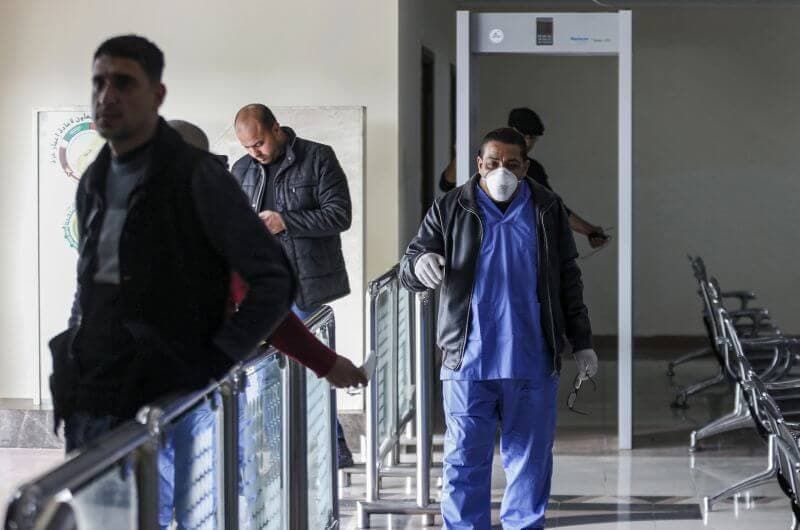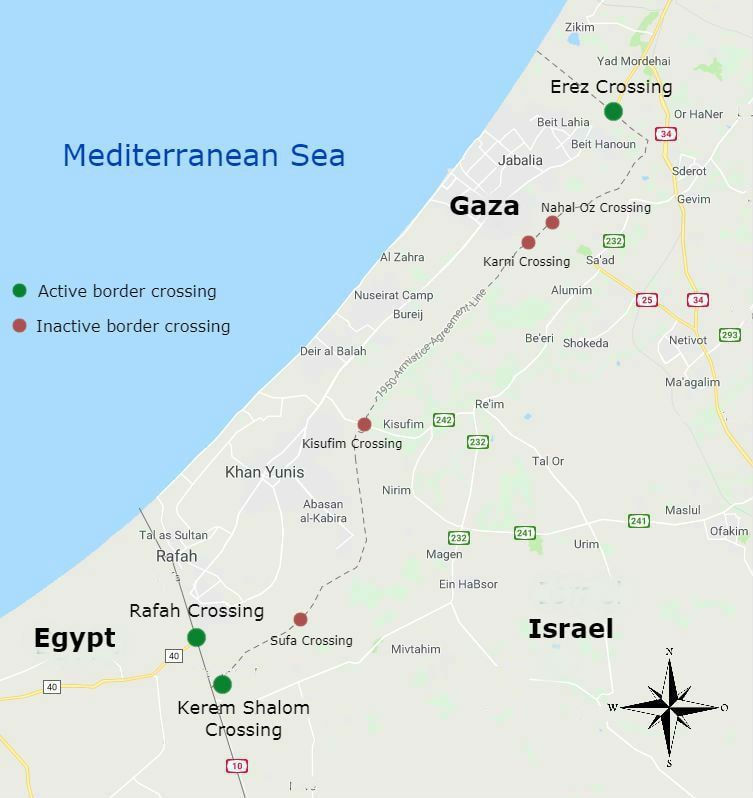Particularly at a time when the coronavirus poses a significant risk of spreading to the Palestinian population of Gaza, the Hamas-controlled enclave is once again in the news. And with that, a new focus on the difficulties faced by Gaza’s under-resourced health system. Some media put the blame squarely on Israeli restrictions on Gaza that exist to mitigate Hamas terrorism against Israel. These restrictions are often referred to as a “blockade.” Some, however, go further by referring to a “Gaza siege.”
The word “siege” is deliberately emotive and consistently used by Israel’s detractors and sometimes by mainstream media. For example, The Economist:

The Media’s Gaza Siege Mentality
Language matters. Misleading Terminology is one of our 8 Categories of Media Bias. We note that language is too often used to promote an agenda. The media must exercise caution when consciously choosing to adopt (or avoid) certain terms, proper nouns, or foreign words.
Join the fight for Israel’s fair coverage in the news
The dictionary definition of a siege is:
the act or process of surrounding and attacking a fortified place in such a way as to isolate it from help and supplies, for the purpose of lessening the resistance of the defenders and thereby making capture possible.
Here are seven reasons why Gaza’s situation is far removed from the definition above.
1. Israel does not want to capture Gaza. Israel withdrew its soldiers and its civilian population from the Gaza Strip in the 2005 Disengagement. If Israel wished to retake Gaza, it would not need to lay siege to the territory before using its considerable military power to retake it.
2. A siege is an aggressive military act. But who is actually attacking whom? All of Israel’s military operations since withdrawing from the Gaza Strip have been in response to thousands of rockets fired by Palestinian terror organizations towards Israeli population centers.
3. In fact, Israel’s blockade is a defensive measure meant to protect its population from terrorists by preventing those terrorists entering Israel, smuggling weaponry into the Gaza Strip, or getting hold of materials that could be used to manufacture weapons. Indeed, the primary reason for the Gaza blockade from both the Israeli and Egyptian sides is the threat of Hamas weapons smuggling.
4. What kind of “siege” can Gaza be under when the “besieged” call on their people not to travel abroad? Indeed, under the threat of coronavirus, the Hamas-run Health Ministry in March 2020, urged Palestinians in the Gaza Strip to avoid travel abroad. “We call on citizens to not depart the Gaza Strip — unless totally necessary — in order to preserve their well-being,” the ministry said in a statement. Further evidence that movement of people, while restricted to those with permits from Israeli authorities and the few hundred per day allowed through the Egyptian Rafah border crossing, is still possible.

5. Is it a “siege” when Israel has an administrative organization dedicated to working with the local Palestinian population? The Coordination of Government Activities in the Territories (COGAT) has a Coordination and Liaison Administration (CLA) for Gaza that works to assist the local Palestinian population in a wide range of areas. This includes:
- importing and exporting goods.
- coordinating passage of Palestinians to Israel and abroad (primarily for commercial and medical purposes).
- facilitating passage for international delegations and aid workers.
- promoting projects under the leadership of the international community (e.g. building schools, medical centers, community centers, housing), and assistance in the fields of agriculture, transportation, industry and commerce.
6. The most effective way to lay siege to a territory would be to cut off the electricity and water supplies. Instead, every year Israel provides more than 125 megawatts of electricity to the Gaza Strip, which constitutes more than half of the electrical power supply. Furthermore, Israel supplies about 10 million cubic meters of water a year.
7. Starving the population or depriving it of basic humanitarian goods or medicines would also constitute an effective siege. Yet, there has been no blockade on basic food items, medicine, and other humanitarian goods going into Gaza. Since Hamas came to power, trucks pass over the border with Israel almost every day, laden with these supplies. There have been no reports of starvation or health epidemics in Gaza.
Here’s a by-the-numbers look at what 147,540 trucks delivered to Gaza in 2017 per COGAT:
- 3,383,440: tons of construction materials
- 568,744: tons of food
- 637,111: tons of gas
- 155,038: liters of diesel fuel
- 40,696: liters of gasoline
- 7,044: tons of medical equipment
- 3,154: vehicles
Further, more than 6.5 million tons of construction materials have been brought into the Strip to rebuild homes, roads, public facilities and other infrastructure since the 2014 Gaza war.
Related reading: The Gaza Blockade: An Explainer
Ultimately, while restrictions on movement of people and materials exist in order to prevent terrorism, the Israeli/Egyptian blockade of Gaza should not be referred to as a “siege.” Hamas’ own survival depends on blaming the suffering of Gazans on Israel in order to divert from its own failures. Sadly, there are too many, including some media, who willingly buy into this narrative.
Israel has no desire to see the people of Gaza suffering and does all it can to balance its own security needs with the humanitarian requirements of the Palestinians. Gaza is not under “siege.”
Liked this article? Follow HonestReporting on Twitter, Facebook, Instagram and TikTok to see even more posts and videos debunking news bias and smears, as well as other content explaining what’s really going on in Israel and the region.
New! Skip the social scroll and get the latest from HonestReporting via Telegram.


